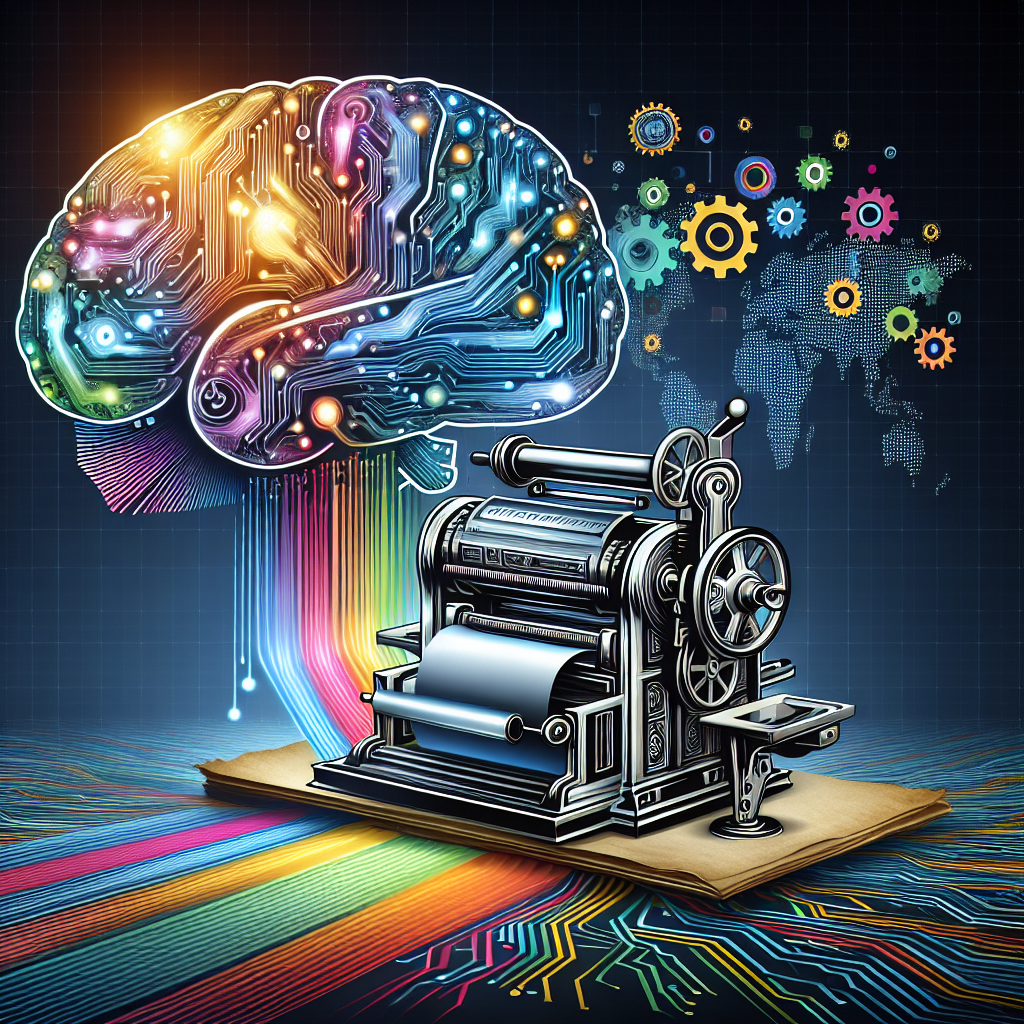In recent years, data journalism has become an increasingly important field in the world of media. With the rise of big data and the availability of powerful tools for analyzing and visualizing data, journalists are able to uncover new stories and insights that were previously hidden. One of the key technologies driving this trend is artificial intelligence (AI). AI has the potential to revolutionize the field of data journalism, enabling journalists to analyze and interpret vast amounts of data in ways that were previously impossible.
AI and data journalism have a powerful synergy. AI algorithms can help journalists analyze large datasets quickly and efficiently, allowing them to identify trends, patterns, and anomalies that might otherwise go unnoticed. AI can also be used to automate the process of collecting and processing data, freeing up journalists to focus on more in-depth analysis and storytelling.
One of the key advantages of AI in data journalism is its ability to uncover hidden insights in data. For example, AI algorithms can be used to identify correlations between different variables in a dataset, helping journalists to uncover new stories and trends. AI can also be used to predict future trends based on historical data, providing journalists with valuable insights for their reporting.
Another key advantage of AI in data journalism is its ability to automate routine tasks. For example, AI algorithms can be used to automatically collect and clean data from multiple sources, saving journalists valuable time and effort. AI can also be used to generate visualizations and reports based on data, making it easier for journalists to communicate their findings to a wider audience.
AI can also help journalists to fact-check and verify information more quickly and accurately. AI algorithms can be used to analyze the credibility of sources, detect fake news, and identify inconsistencies in data. This can help journalists to ensure the accuracy and reliability of their reporting, ultimately building trust with their audience.
Despite the many advantages of AI in data journalism, there are also some challenges and limitations to consider. One of the key challenges is the potential for bias in AI algorithms. AI algorithms are only as good as the data that is used to train them, and if the data is biased or incomplete, the results of the analysis may also be biased. Journalists need to be aware of these limitations and take steps to mitigate bias in their reporting.
Another challenge is the complexity of AI algorithms. Many journalists may not have the technical skills or expertise to use AI tools effectively. This can create a barrier to entry for journalists who are interested in incorporating AI into their reporting. However, there are a growing number of tools and resources available to help journalists learn how to use AI in their reporting, making it more accessible to a wider range of journalists.
Despite these challenges, the combination of AI and data journalism has the potential to revolutionize the field of journalism. By leveraging the power of AI to analyze and interpret vast amounts of data, journalists can uncover new stories, identify trends, and communicate their findings to a wider audience. AI can help journalists to work more efficiently and effectively, ultimately improving the quality and impact of their reporting.
In conclusion, AI and data journalism are a powerful combination that has the potential to transform the field of journalism. By leveraging the power of AI algorithms to analyze and interpret data, journalists can uncover new stories, identify trends, and communicate their findings to a wider audience. While there are challenges and limitations to consider, the benefits of AI in data journalism far outweigh the drawbacks. As AI technology continues to evolve, we can expect to see even more innovative uses of AI in data journalism in the years to come.
FAQs:
Q: What is data journalism?
A: Data journalism is a field of journalism that involves the analysis and visualization of data to uncover new stories and insights. Data journalists use tools such as spreadsheets, databases, and visualization software to analyze large datasets and communicate their findings to a wider audience.
Q: How can AI be used in data journalism?
A: AI can be used in data journalism to analyze large datasets quickly and efficiently, identify trends and patterns in data, automate routine tasks such as data collection and cleaning, and fact-check and verify information. AI algorithms can help journalists to uncover hidden insights in data and communicate their findings to a wider audience.
Q: What are some examples of AI in data journalism?
A: Some examples of AI in data journalism include using AI algorithms to analyze social media data to uncover trends and patterns, using AI to predict future trends based on historical data, and using AI to fact-check and verify information. AI can also be used to automate the process of collecting and processing data, saving journalists valuable time and effort.
Q: What are the challenges of using AI in data journalism?
A: Some of the challenges of using AI in data journalism include the potential for bias in AI algorithms, the complexity of AI algorithms, and the need for journalists to have the technical skills and expertise to use AI tools effectively. However, there are tools and resources available to help journalists overcome these challenges and incorporate AI into their reporting.

